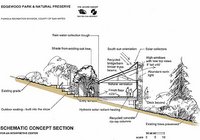

They describe themselves as a group of developers, architects, contractors, suppliers, managers, economists that have integrated to form a team with the promise delivering greater architecture and engineering in Africa.
The Arch Design website says"....Fred Waix Waiswa together with two partners founded Arch Design five years ago. He brought with him a rich experience of design from the Petroleum Industry. He had worked for the petroleum giant Shell in several countries across the African continent.
His experience cuts across the continent, from Shell Uganda Ltd where he worked up to the level of Shell Projects Supervisor, responsible for Supervising Engineering for Shell projects, fuel stations, Office Building and depots right from the inception stage up to commissioning. He had also worked for the same company as a Retail Network Planner, in charge of retail marketing of Shell properties.
As a Design Engineer under the East African Shell Cluster, he worked on special Projects that included preparation of detailed designs and production drawings for, New To Industry (NTIs) modern retail outlets, Select stores (super markets), and motels, for Kenya Shell and B.P, Shell Mauritius and Shell Sudan. At Shell Rwanda sarl he worked on the Upgrade of storage fuel tank facilities, fire fighting facilities for the depot and the redesign and upgrade of the Shell Rwanda Head Office in Kigali.
At Shell Djibouti he took part in the Port Depot Seaport Fuel Terminal Upgrade as a lead Design Consultant, worked on new fuel pipelines at the Red Sea to the Terminal, fire Fighting facilities, Djibouti fuel Port Terminal and Drainage system and remodelling of Shell Djibouti Head Offices.
As an Architect/Partner at Arch Design, Kampala-Uganda, he has handled fuel depots for Jovenna Uganda Limited, Galana Oil Uganda Limited (Now Kobil Uganda Ltd.) and Head Office Building for Petro Uganda Limited. He was in charge of refurbishment of fuel Stations around Uganda and preparation of detailed Designs of Petro Uganda's ultra-modern services station with a supermarkets.
He has worked on various Commercial, Institutional and Residential buildings which include upgrade of Mweya Safari lodge to a 5 Star Hotel, Wakiso District Administrative Building & Council Hall, Mbarara District, Administrative Building & Council Hall, Soroti District Administrative Building & Council Hall, Mbarara District Local Government Administration. Soroti District Local Government Administration, Kiboga District Local Government Administration and Library for Ntale School.
He is a Corporate Member of Uganda Society of Architects (USA) and a Registered Architect with the Uganda Architects Registration Board (ARB)...."
Photos courtesy of Arch Design



